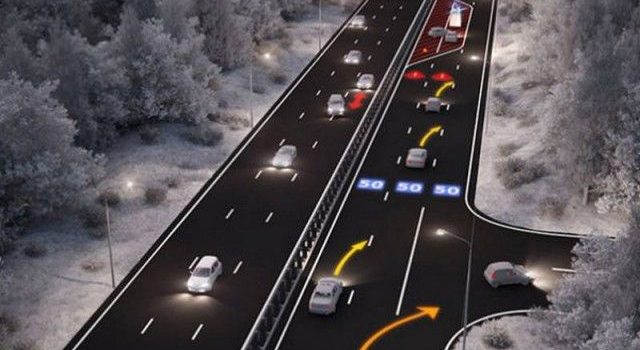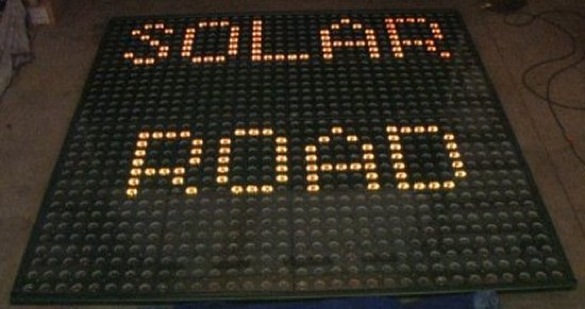Just four years ago, a ton of asphalt in liquid form was selling for $175; thanks to the increasing cost of oil, the same amount of asphalt sells for over $1,000 today. It won’t be long before paving with traditional materials becomes cost-prohibitive, which raises the obvious question of “what comes next?”
One enterprising Idaho company, Solar Roadways, thinks they have the answer. The company has developed a solar-panel-embedded roadway that generates electricity, heats itself to melt snow, warns drivers of changing road conditions and, eventually, pays for itself with the electricity created. It carries fiber optic cabling and power lines, so communications systems and the power grid would be much more weather-resistant than they are today. The Solar Roadway panels can even be equipped with an inductive charging system, which means that electric cars of tomorrow could have an unlimited range, charging as they drive.
The panels are glass-topped, but the glass isn’t the kind most people are accustomed to. The surface has the same amount of traction as asphalt, and it’s designed to withstand the weight of a fully-loaded tractor trailer, under heavy braking. Since each panel is hermetically sealed, the roadways would be impervious to frost heaves, potholes and other weather-related damage. Should a panel get broken, replacing it would be similar to replacing a tile on your kitchen floor.
Solar Roadways will soon have a chance to prove their concept, as the company recently received a $750,000 grant from the Federal Highway Administration to build a solar-powered parking lot. We wish Scott and Julie Brusaw and the rest of the Solar Roadways team the best of luck with their project. It isn’t often that game-changing technology comes along, but this could well be it.


